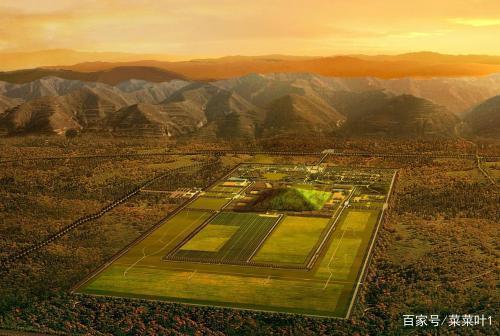
How Deep is the Qin Shi Huang's Tomb?
A bright example of Qin Shi Huang's power is his tomb – the most fabulous mausoleum complex in the world. The burial complex area of about 60 square kilometers is an entire underground city, dug to a depth of 70 to 120 meters below the aquifers.
The Immensity of Qin Shi Huang's Tomb
Qin Shi Huang, the first emperor of a unified China, left behind a legacy as colossal as his ambition. His final resting place, the Qin Shi Huang's tomb, is a testament to his power and the grandeur of ancient China. Covering an area of approximately 60 square kilometers, this sprawling necropolis is an intricate labyrinth of chambers, corridors, and treasures, meticulously designed to accompany the emperor into the afterlife.
Delving into the Depths: The Tomb's Structure
The tomb's structure is a fascinating blend of earthly grandeur and celestial symbolism. Historical records describe the central tomb, where the emperor lies, as replicating the cosmos itself. The ceiling is adorned with celestial patterns, mirroring the night sky, while the floor depicts the earthly realm. Surrounding the central mound are numerous pits containing the famous Terracotta Army, along with other figures like bronze chariots and horses.
A Subterranean City: 70 to 120 Meters Below
The actual depth of the tomb complex remains a subject of fascination and debate. Historical records and archaeological investigations suggest the complex extends 70 to 120 meters below the surface. This depth served several purposes:
- Protection from Grave Robbers: The sheer depth made accessing the tomb extremely difficult, acting as a deterrent against potential looters.
- Preservation: The depth, combined with the tomb's construction, provided a stable environment that helped preserve the artifacts and the emperor's remains.
- Symbolism: Burying the emperor deep within the earth mirrored the ancient Chinese belief that the soul descended to an underworld after death.
Unraveling the Mysteries: Why the Tomb Remains Unexcavated
Despite its allure, the central tomb of Qin Shi Huang remains unexcavated. Several reasons contribute to this:
- Technological Challenges: The scale and complexity of the tomb, coupled with its depth, pose significant logistical and technical challenges.
- Preservation Concerns: Excavating the tomb could expose the artifacts and the emperor's remains to potentially damaging environmental factors.
- Ethical Considerations: There are ethical considerations regarding disturbing the final resting place of a historical figure of such significance.
FAQs about Qin Shi Huang's Tomb
1. What is the most famous discovery within Qin Shi Huang's tomb complex?
The most famous discovery is undoubtedly the Terracotta Army, thousands of life-sized clay warriors and horses buried in pits surrounding the emperor's tomb.
2. When was the Terracotta Army discovered?
The Terracotta Army was discovered in 1974 by farmers digging a well.
3. Why was Qin Shi Huang's tomb built?
The tomb was built as the final resting place for Qin Shi Huang, the first emperor of a unified China. It was intended to house his remains and treasures for eternity and to reflect his power and legacy.